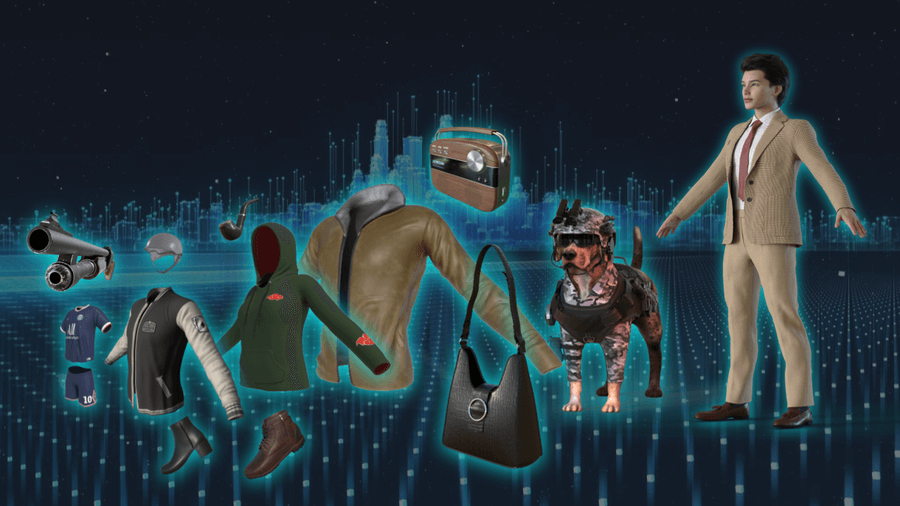The Benefits and Challenges of 2D to 3D Modeling: An Overview

In today's fast-paced world, 3D modeling has become an integral part of many industries, ranging from ecommerce to entertainment. With 3D models, designers can create accurate representations of real-world objects and environments, and these models can be used for a variety of purposes. In this blog, we'll explore the benefits and challenges of 2D to 3D modeling and provide an overview of different types of 3D modeling. We'll also discuss popular 2D to 3D modeling software tools and the challenges of 3D printing from 2D drawings.
Industries that Require 2D to 3D Modeling
Many industries require 2D to 3D modeling services, character modeling, product design, 2D to 3D product rendering, video game development and animation, film and television, and the medical industry. Gamers, architects, engineers, often use 3D models to visualize and plan their product placement, game development and many other areas. Companies use 3D models to design and test products before production. 3D models are also used to create characters, environments, and other elements in video games and animated films. Special effects teams in the film and television industry use 3D models to create realistic environments and visual effects. The medical industry uses 3D models that are made from 2D images to visualize and plan surgeries and to create prosthetics and implants.
Challenges in 2D to 3D Modeling Process
Despite the many advantages of 3D modeling, the process of converting 2D to 3D can be challenging. Ensuring that the 3D model accurately represents the 2D image or drawing can be difficult. Creating a 3D model from a 2D image can also be a time-consuming process, particularly for complex designs. The process of converting 2D to 3D requires specialized skills and knowledge of 3D modeling software. 2D images can also lack important details that are needed to create an accurate 3D model.
Advantages of 3D Modeling over 2D Drawings
While 2D drawings can be useful for conceptualizing ideas, 3D modeling can help with better visualization, error identification, and communication of design ideas. With 3D models, designers can create accurate representations of real-world objects and environments, which can help to identify potential design flaws early in the process. 3D models also allow for better communication of design ideas, as they can be viewed from different angles and perspectives.
Types of 3D Modeling
There are several types of 3D modeling, including polygonal modeling, NURBS modeling, and procedural modeling. Polygonal modeling is the most common type of 3D modeling, and it involves creating 3D models using a series of interconnected polygons. NURBS modeling is used for creating organic shapes, and it involves creating 3D models using a series of curved surfaces. Procedural modeling is used for creating complex models that would be difficult or time-consuming to create manually.
2D to 3D Modeling Software
There are several popular software tools used in the industry for 2D to 3D modeling, including AutoCAD, SketchUp, and Blender. AutoCAD is a 2D and 3D CAD software that is used primarily for architecture, engineering, and construction. SketchUp is a 3D modeling software that is often used for product design and architecture. Blender is a free and open-source 3D modeling software that is popular among video game developers and animators. Each software tool has its own capabilities and limitations, and the choice of software depends on the industry and specific needs of the project.
Challenges in 3D Printing from 2D Drawings
One of the challenges of 3D printing from 2D drawings is that the 2D image or drawing may not contain enough information to create an accurate 3D model. This can result in a low-quality 3D print or one that is completely unusable. Another issue is that the 3D printer may not be able to accurately reproduce complex designs, particularly those that require intricate details or delicate parts. In order to overcome these challenges, it is important to use high-quality 3D modeling software that can create accurate and detailed 3D models, and to use a 3D printer that is capable of producing high-quality prints.
Conclusion
2D to 3D modeling is an essential process for many industries, including architecture, product design, and entertainment. While the process can be challenging, the benefits of 3D modeling are numerous, including better visualization, error identification, and communication of design ideas. Popular software tools such as AutoCAD, SketchUp, and Blender can help businesses create high-quality 3D models, but it is important to choose the right software for the specific needs of the project. My3dmodels provides businesses with a reliable and experienced 2D to 3D modeling service that can help them bring their ideas to life in a timely and cost-effective manner.
My3dmodels does 2D to 3D modeling for a variety of industries, including architecture, product design, and video game development. The company has a team of over 50+ experienced 3D designers with 7 years of experience using advanced software tools such as Maya, SketchUp, Z-Brush, Blender etc. We work closely with our clients from varied backgrounds to ensure that their 3D models and characters developed from 2D images accurately represent their vision and are delivered on time and within budget.




